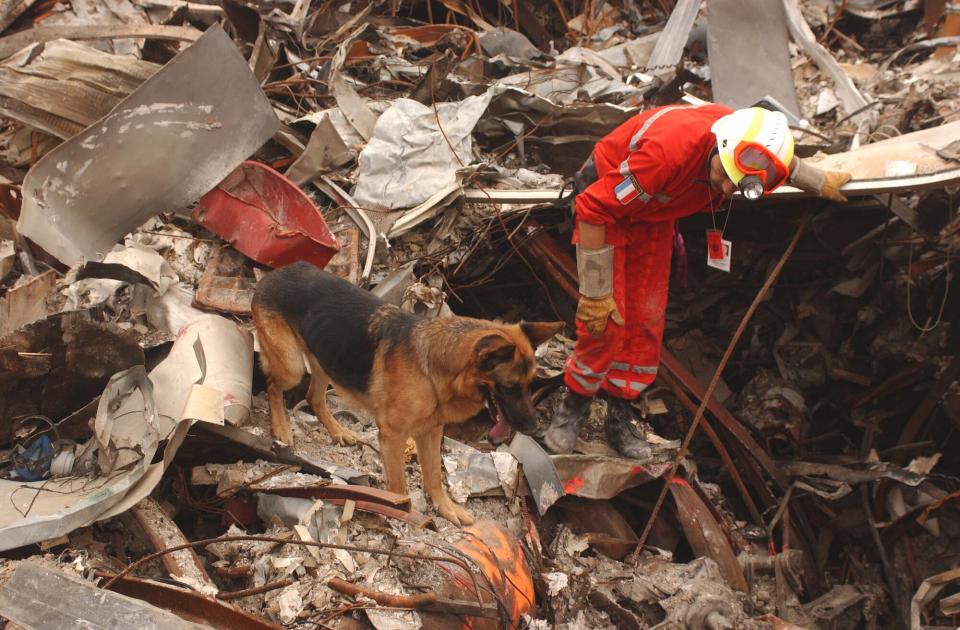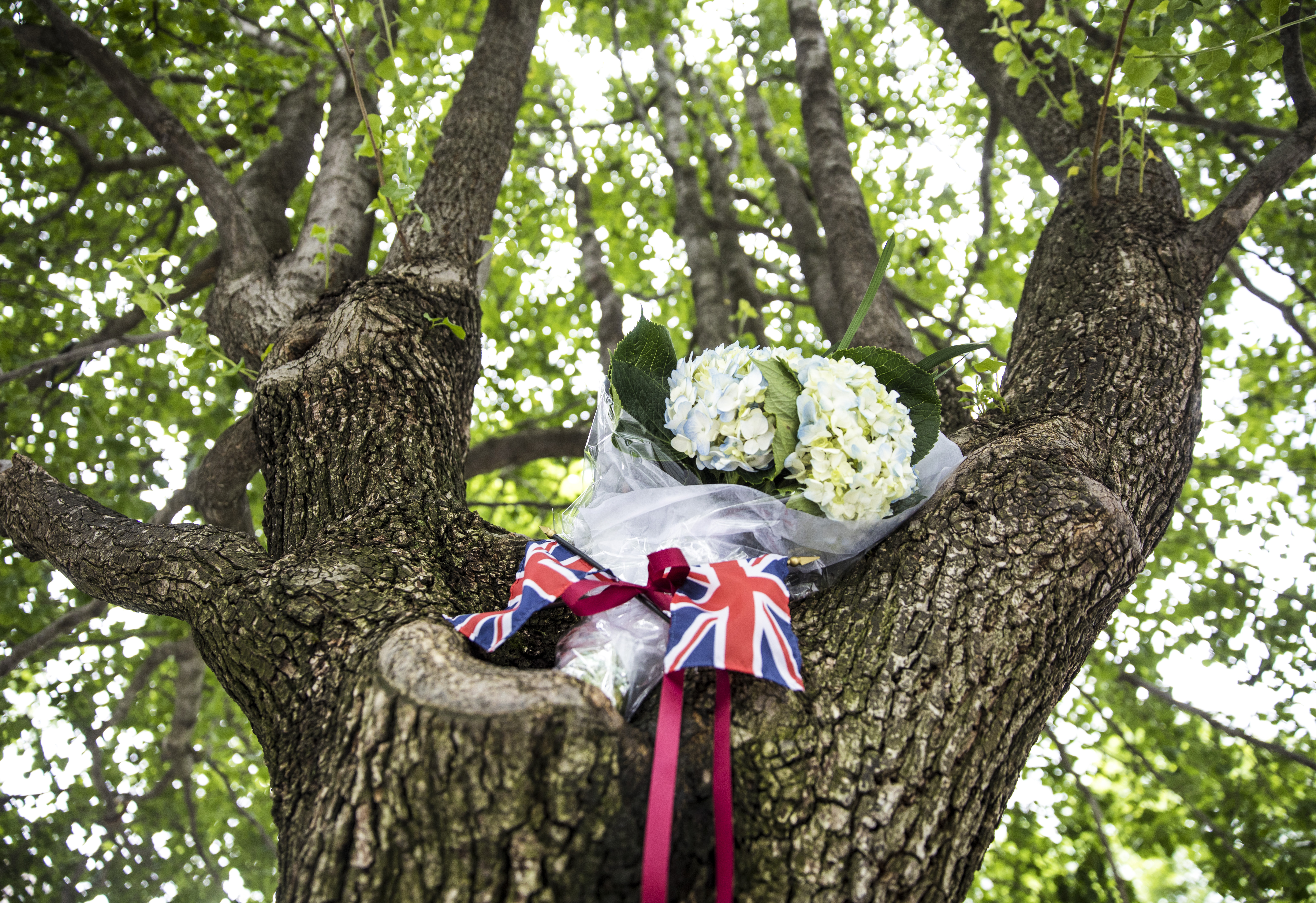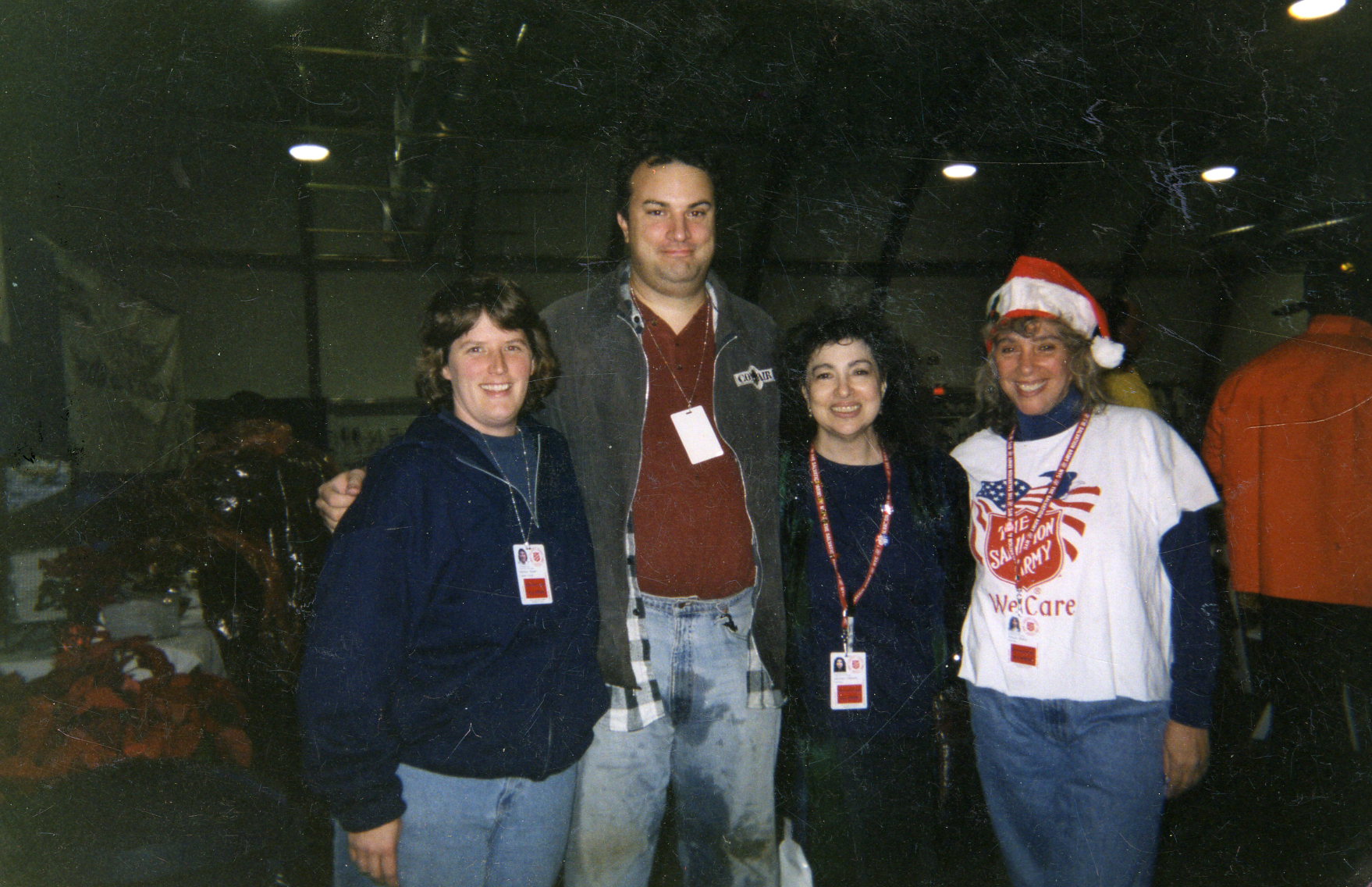Make a donation to the museum
Rescue & Recovery at 20: The Four-Legged Heroes
Rescue & Recovery at 20: The Four-Legged Heroes
- November 18, 2019
- Updated May 11, 2022

Throughout the month, leading up to the 20th anniversary of the formal end to rescue and recovery efforts at Ground Zero, we're highlighting the powerful stories of rescue, recovery, and relief workers from all walks of life. Today's blog post (originally published in 2019) features some of the canines who worked at the site and the tremendous role they played in the operation.
In April, to mark the upcoming milestone, we published K-9 Courage: The Working Dogs of 9/11. Available at the Museum Store along with a selection of other items that pay homage to these furry heroes, the book includes the images seen here as well as many more stories and photos of these incredible animals on the job.
(Left) Search and rescue handler and dog at the World Trade Center site on September 21, 2001. (Right) FEMA Texas Task Force 1 dog Bretagne, rests at Ground Zero.
Within hours of the 9/11 attacks, thousands of rescue workers from across America deployed to Ground Zero to help. Joining the endeavor were an estimated 300 specially trained dogs with experience not only in search and rescue, but police work, therapy, and comfort provision.
Search and rescue dogs (SAR) specialize in disaster response skills. Trained to detect the scent of living humans, their mission was to find survivors buried in the rubble. One of the dogs found the last living person rescued from Ground Zero, 27 hours after the collapse of the towers. As the days went on, rescue and recovery workers realized the chance of finding survivors was increasingly slim, and the operation turned its focus to recovery. Cadaver dogs, trained to find human remains, were also on the scene.
Alongside their handlers, the four-legged heroes worked tirelessly climbing huge piles of debris while fires still smoldered. The search for signs of life or human remains was mentally and physically taxing on the dogs, who became discouraged and started losing their drive to continue. Recognizing the importance of motivation among the dogs, handlers would stage "mock finds" so the animals could feel successful.
Veterinarians were stationed at the site to help care for these dogs. Working 12-hour shifts on the pile, the dogs needed to have their paw pads, eyes, and nose cleaned often. Cynthia Otto, director of the Penn Vet Working Dog Center, and Lisa Murphy, an associate professor of toxicology and director of the Pennsylvania Animal Diagnostic Laboratory System at the School of Veterinary Medicine's New Bolton Center, were both on the ground supporting these dogs.

Thea, with handler Elena Lopez de Mesa of FEMA Florida Task Force 1, at the site.
They sat down with Amy Weinstein, Senior Curator, Oral Histories and Vice President of Collections, to talk about their experiences taking care of these extraordinary canines at Ground Zero.
In addition to search and rescue dogs at Ground Zero, therapy dogs like Nikie provided comfort to the workers who continued to spend countless hours on the pile. They were a ray of sunshine among the death and debris, even just for a minute. Bretagne, the last known surviving search dog of 9/11, was laid to rest in June 2016.
Despite the danger and the long days and nights these canines endured for us, the spirit and stories of their heroism live on.
By 9/11 Memorial Staff
Previous Post
How to Talk to Children About Tragedies like the Manchester Attack

Talking to kids about 9/11 is challenging. For parents, caretakers, friends and families, broaching this complex subject with children is as tough for many today as it was soon after the 2001 attacks.
Next Post
In New York’s Darkest Moment, Compassion Soon Followed

In the wake of the destruction and loss of the Sept. 11 terror attacks, many New Yorkers felt an overwhelming need to help rebuild their city. Debora Jackson was one of these selfless and compassionate New Yorkers.

